What's New
Displaying results 3231 - 3240 of 4052
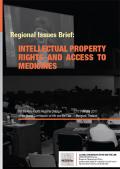
Resource | Publications,
This Regional Issues Brief has been written to provide an overview of an area of enquiry that the Global Commission on HIV and the Law is examining – issues of laws pertaining to intellectual property rights and access to medicines. It has been undertaken through a literature review of laws and documentation of their enforcement in the context of Asia and the Pacific. It serves as an information resource and complements the report of the Regional Dialogue for Asia and the Pacific that was held under the auspices of the Global Commission on HIV and the Law in Bangkok on 16 and 17 February 2011.
Significant advances in treatment access in the Asia Pacific region have resulted from the work of activists who have campaigned to ensure that intellectual property laws do not impose unreasonable constraints on access to HIV medicines. Activists have achieved a number of successes through campaigning and litigation in Thailand and India. The focus of campaigning has been on challenging overbroad patents and trade agreements that block production and importation of affordable generic versions of HIV medicines. The legal response to access to medicines in the region continues to be influenced by heated policy debates between consumer activists and the mainstream pharmaceutical industry.
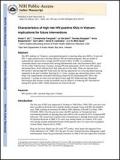
Resource | Publications,
The HIV epidemic in Vietnam is concentrated primarily in injecting drug users (IDUs). To prevent HIV-1 super-infection and to develop effective HIV prevention programs, data are needed to understand the characteristics of high risk HIV-positive IDUs. In 2003, we conducted a community-based cross-sectional study among predominately male, out-of-treatment IDUs, aged 18–45, in Bac Ninh Province, Vietnam. Among 299 male participants, 42.8% were HIV-positive and among those, 96.9% did not know their status prior to the study. Thirty-two percent were HIV-positive and had high HIV behavioral risk (having unprotected sex or having shared injecting equipment in the past 6 months). Injecting for ≥ 3 years, younger age, and pooling money to buy drugs were independently associated with being at high risk for transmitting HIV. IDUs who purchased >1 syringe at a time were less likely to have high HIV behavioral risk. Structural interventions that increase syringe accessibility may be effective in reducing HIV risk behavior among HIV-positive IDUs. Study limitations are noted in the text.
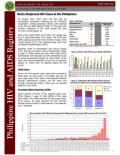
Resource | Fact Sheets,
In January 2011, there were 152 new HIV Ab seropositive individuals confirmed by the STD/AIDS Cooperative Central Laboratory (SACCL) and reported to the HIV and AIDS Registry (Table 1). This was a 6% increase compared to the same period last year (n=143 in 2010) [Figure 1].
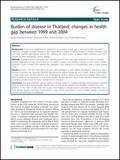
Resource | Publications,
Continuing comprehensive assessment of population health gap is essential for effective health planning. This paper assessed changes in the magnitude and pattern of disease burden in Thailand between 1999 and 2004. It further drew lessons learned from applying the global burden of disease (GBD) methods to the Thai context for other developing country settings.
The study highlights unique pattern of disease burden in Thailand whereby epidemiological transition have occurred as non-communicable diseases were on the rise but burden from HIV/AIDS resulting from the epidemic in the 1990s remains high and injuries show negligent change. Lessons point that assessing DALY over time critically requires continuing improvement in data sources particularly on cause of death statistics, institutional capacity and long term commitments.
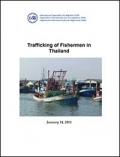
Resource | Publications,
While anti-trafficking legislation has been improved and Ministry of Social Development and Human Security (MSDHS) facilities established in Thailand to provide support to male victims of trafficking, including fishermen, the current framework requires men who have been trafficked to stay in shelters and does not permit them to work. The condition prohibiting work serves as a disincentive for male victims of trafficking to wilfully be identified as such.
The objective of this report is to provide a better understanding of the recruitment, living and working conditions of fishermen and the extent of exploitation and abuse in the Thai fishing sector. The report reviews the legislative and regulatory framework governing the fishing sector and the recruitment of fishermen and its implementation, highlighting certain gaps which enable traffickers to operate in the sector and lead to abusive labour conditions. The report also examines protection and support services accessible by victims of trafficking.
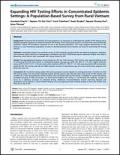
Resource | Publications,
To improve HIV prevention and care programs, it is important to understand the uptake of HIV testing and to identify population segments in need of increased HIV testing. This is particularly crucial in countries with concentrated HIV epidemics, where HIV prevalence continues to rise in the general population. This study analyzes determinants of HIV testing in a rural Vietnamese population in order to identify potential access barriers and areas for promoting HIV testing services.
A population-based cross-sectional survey of 1874 randomly sampled adults was linked to pregnancy, migration and economic cohort data from a demographic surveillance site (DSS). Multivariate logistic regression analysis was used to determine which factors were associated with having tested for HIV.
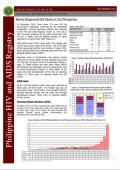
Resource | Fact Sheets,
In December 2010, there were 174 new HIV Ab seropositive individuals confirmed by the STD/AIDS Cooperative Central Laboratory (SACCL) and reported to the HIV and AIDS Registry (Table 1). This was a 38% increase compared to the same period last year (n=126 in 2009), and the highest number of cases reported in a month since 1984 [Figure 1].
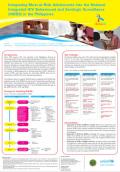
Resource | Fact Sheets,
Since 2007, passive HIV case reporting in the Philippines showed an increasing number of cases from younger age-groups (20-29 years). Anecdotal reports also indicated that substantial proportions of most-at-risk populations (MARP) were adolescents. It was critical to understand patterns of sexual behavior and drug-use among Filipino most-at-risk adolescents (MARA) to establish an effective prevention program and deliver needed services. Since the National Integrated HIV Behavioral and Serologic Surveillance (IHBSS) was limited to adult populations of injecting drug users (IDU), female sex workers (FSW) and males having sex with males (MSM), there was no official data on MARA for better targeted programming.
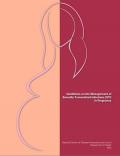
Resource | Guidelines,
Pregnant women with STI can transmit the infection to their children, resulting in significant morbidity and mortality. Chlamydia trachomatis can cause neonatal pneumonitis and maternal endometritis. Neisseria gonorrhea can result in ophthalmia neonatorum, neonatal systemic infection, and maternal endometritis.
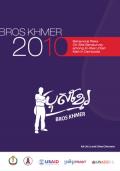
Resource | Publications,
The BROS Khmer (Behavioral Risks On-Site Serosurvey of At-Risk Urban Khmer Men) study was designed to collect integrated HIV serostatus and behavioral risk information among Cambodian men frequenting ‘hot spots’ (i.e., entertainment venues) or MSM (Men who have Sex with Men) with a mobile bus.
The behavioral data of 3,007 men (1,026 of which reported having had sex with a man) have shown that not only do differences exist between MSM and MSW (Men who have Sex with Women), but there are also significant differences in HIV-risky activities between MSMW (Men who have Sex with Men and Women) and MSMO (Men who have Sex with Men Only).





